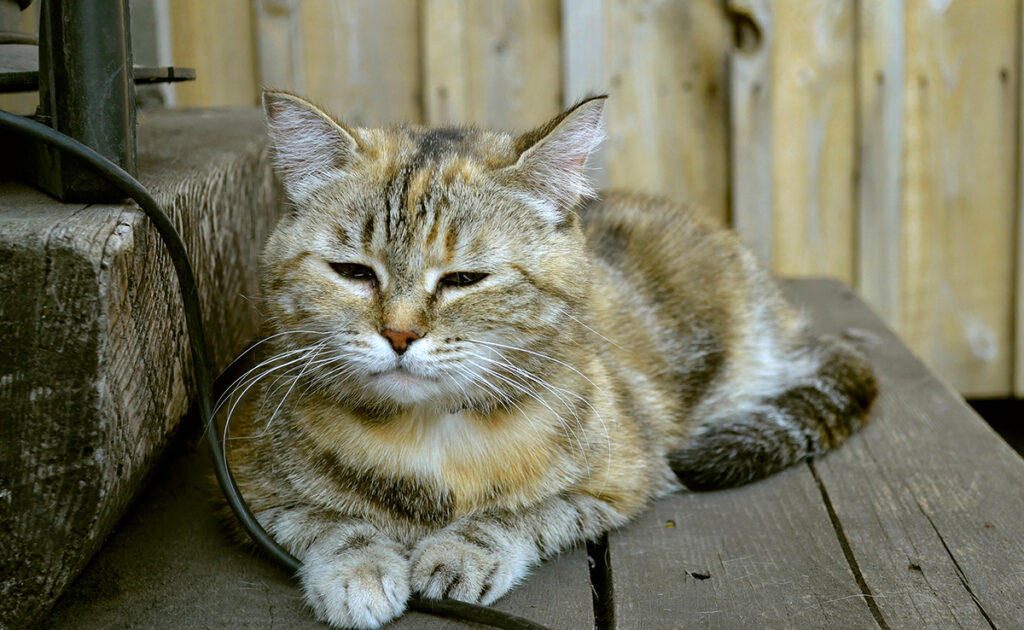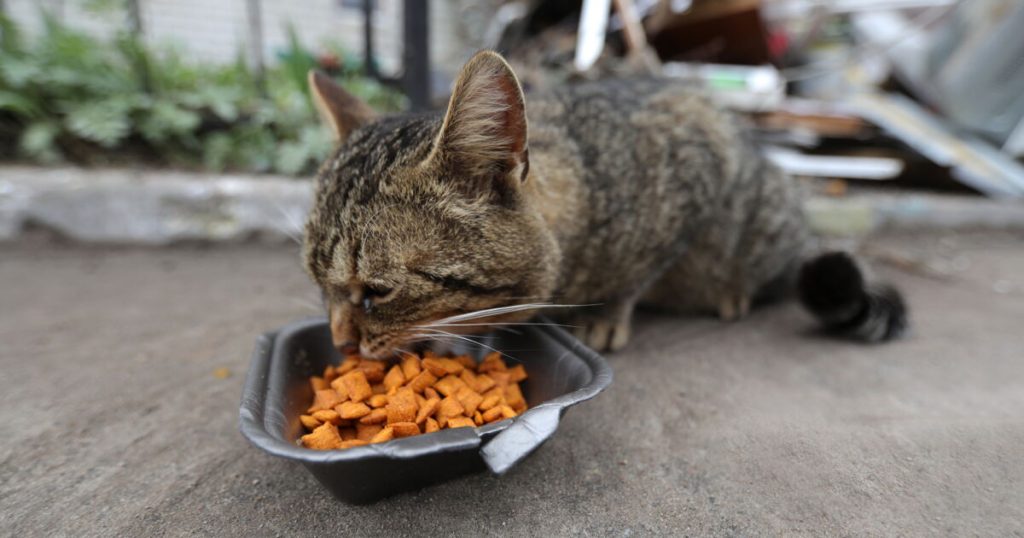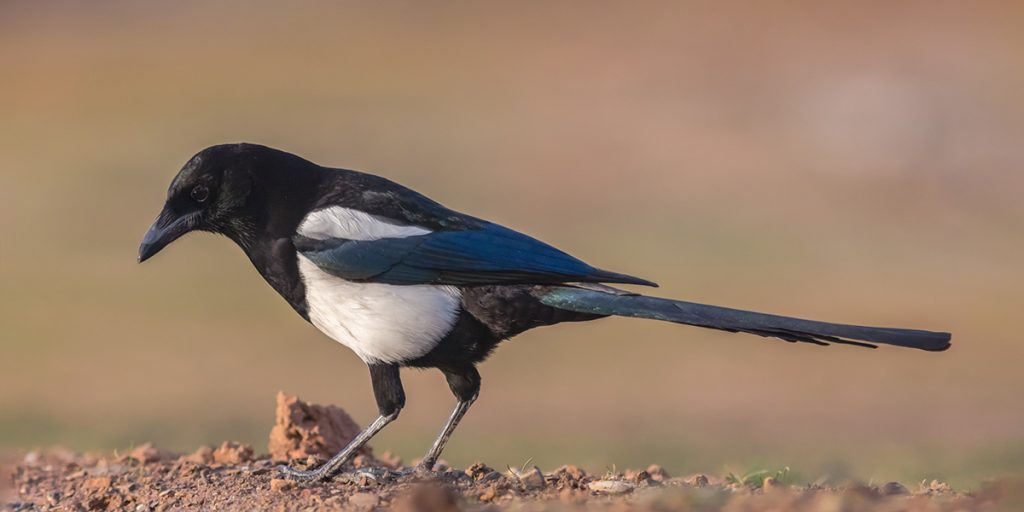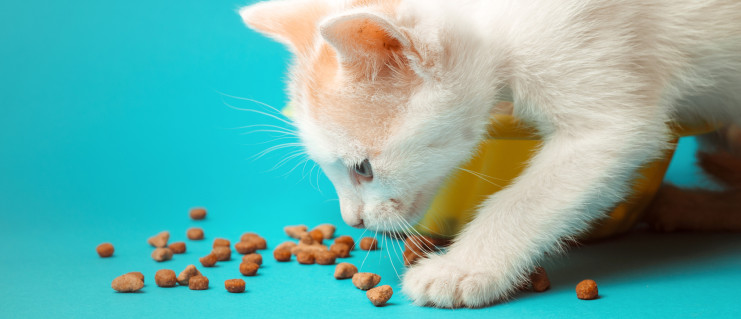
Oral infections, such as periodontal disease or the extraction of several teeth in older cats cause them to become toothless. Often a source of anxiety for their owner who worries about the food they will be able to give their cat, the feline finds itself relieved of the many pains caused by inflammation or infections. There are many methods available to feed your edentulous cat without compromising the quality of the nutrition. Classic kibble, wet food, household ration, here are three ways to feed your cat, even if he no longer has all his teeth.
Offer a new diet to the toothless cat: wet food or household ration?
When the cat can no longer chew, even if these gums harden, the kibble can cause stomach upset. He then risks sulking his bowl. To prevent a lack of interest in food which could harm the health of your four-legged friend, you can offer him other forms of food.
Pates and bites for the toothless cat
When the cat presents gastrointestinal problems by keeping its usual kibble or sulks its bowl to the point of suffering from a deficiency, industrial wet food can meet its dietary needs. The difficulty lies more in the possibility of feeding him several times a day if you are gone all day. While there are many distributors perfect for offering a meal per gram ready for the feline's little stomach, few brands offer this very practical tool when it comes to fresh bites or mash. Unfortunately, wet food cannot be left out in the open all day. Only the Trixie brand currently offers a refrigerating dispenser. With its programmable timer, you can offer several fresh, moist meals that are easy to chew and digest to your toothless cat. The choice of wet foods is vast, and you can rely on the advice of your veterinarian to offer your elderly feline a wet food balanced in proteins. Pay special attention to other nutrients, antioxidants, minerals and essential fatty acids, phosphorus and sodium to ensure digestibility and nutrition for your feline. The last advantage of wet food is obviously its richness in water which will contribute to the proper functioning of its kidneys.
Offer a household ration to your feline
There are many household ration recipes perfectly adapted to the physiology of the edentulous cat. It hydrates just as much as pâté and is often more appetizing for demanding mistigris than a plate of croquettes or pâtés. Reputed to be more digestible than industrial products intended for our four-legged companions, small homemade meals are when the cat presents:
- Difficult digestion;
- Digestive hypersensitivity;
- Food-borne skin allergy.
If you want to prepare your cat's household ration, talk to your veterinarian. Establish, with his advice, the portions that will delight the demanding palate of your feline companion while providing him with the nutrients, vitamins and minerals adapted to his age and his absence of teeth. With his advice, you can try one of our 5 easy-to-make homemade recipes for cats.
If you change your cat's diet after teeth extraction, prepare a smooth transition between kibble and the new chosen food.
Change the cat's diet gently
The cat's intestinal flora is very fragile. A sudden change between two types of food causes intestinal disorders in most cats such as transient diarrhea which not only weakens them, but may well compromise the adoption of this new dish. So that your cat tolerates the new food and its intestinal microbiome changes smoothly, plan a transition over a week or so.
1er day, prepare a bowl with 100% of his usual kibble. The 2d and 3e days, introduce 25% of the new food and only 75% kibble. The 4e and 5e days, provide 50% of each food. At 6e and 7e day, we reverse the trend by preparing a bowl with 75% of the new food and 25% kibble. On the last day, you only offer 100% mash. If your cat has an intestinal disorder on 4e and 5e day, extend the mixture of the 2 for a few daysd and 3e days.
If you want to move your cat from kibble to the household ration, it is best to include each meat one by one. The transition then lasts from 3 weeks to a month. You will find all our advice on the cat's food transition in the article: “Food transition in cats: principle and stages”.
However, your cat may prefer to continue enjoying kibble? Here is how to facilitate the ingestion and digestion of dry food.
How to serve dry food when the cat no longer has teeth?
Appreciated by many owners, kibble offers a practical, varied and easy to distribute diet throughout the day to our little nibblers. When the elderly cat loses its teeth due to an oral infection or the veterinarian has to extract several teeth, many of us wonder if they can still give kibble to their feline. Several methods allow you to offer your feline's favorite solid food and not deviate from its habits.
When the kibbles are too big and the cat is unable to catch them, simply arm yourself with a rolling pin and crush them. A less painful method for his usual food is simply to macerate the kibbles in hot water or chicken broth. Serve when the preparation has cooled. Your cat will benefit from kibble that is easier to grip and much less hard to chew. This method also has the advantage of helping the cat to hydrate gently. And, to top it off, if your feline is fussy after the feeding procedure, the aromas released will pleasantly tickle its snout and encourage it to feed. In order for him to eat properly all day, it is best not to serve him in too large quantities. These will dry out and lose their appeal and nutritional value. Above all, do not give him kitten kibble, which, although their shape and size may seem suitable, are not suitable to meet the nutritional needs of the senior cat.
If, however, you prefer to feed your cat with its usual kibble without crushing it or adding water to soften it, be aware that teeth are not essential for the feline to eat. Our little felines are full of resources and some “velvet paws” persevere in nibbling their kibble as is, moistening it with their saliva or swallowing it whole.
There are no soft kibbles to feed toothless cats, however, there are kibbles with a hard shell with a moist core specially developed for cats over 12 years old. They are intended for our little companions who suffer from gum pain or dental problems.
What is the impact of tooth loss on cat nutrition?
The loss or extraction of several teeth presents different consequences for the feline:
- Difficulty chewing;
- Loss of interest in food leading to malnutrition;
- Digestion can be difficult and cause diarrhea and vomiting;
- Nutrient ingestion may become less efficient and lead to deficiencies in the cat's diet.
To avoid all these future inconveniences for your little companion, the best prevention begins with a balanced diet throughout his life. Regular medical visits to the veterinarian will allow you to check the condition of your teeth and tartar. To protect the jaws of our small carnivores and their teeth:
- Inspect your cat's teeth and gums regularly.
- Brush his teeth three times a week using a finger cot with cat toothpaste.
- Promote oral maintenance by offering toys or chewing strips.
- Prevent tartar and gum health problems by adding dental hygiene products to your meal.
When necessary, have descaling carried out by your veterinarian. Your cat will be protected from a number of dental pathologies and will thus be able to maintain its beautiful teeth for many years.




